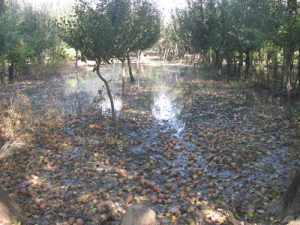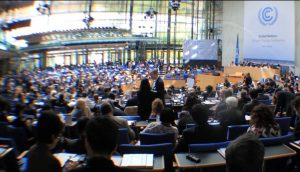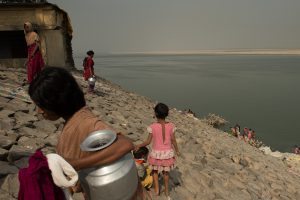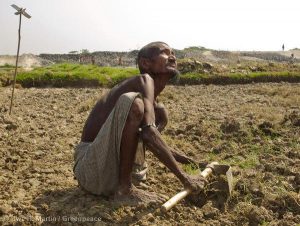With maximum temperatures consistently above 43 degrees Celsius and touching 46 in some places, the heat wave sweeping across South Asia in late May 2015 is estimated to have killed around 2,000 people already. On May 28, the official death toll in India alone was near 1,500 and climbing.
Most of the deaths have taken place in two southern Indian states of Andhra Pradesh and Telangana.
This is the highest toll since 2003, when around 3,000 people had died within a week. At that time too, most of the deaths were in Andhra Pradesh.
Meteorologists working for the governments of India and Pakistan ascribe the ongoing heat wave to winds blowing eastwards from the deserts of southern Baluchistan and adjoining areas of Iran. Their forecast is that the heat wave will continue at least till the end of the month.
With throats parched and skins burning, few people have been venturing outdoors during the day unless they absolutely have to. As a result, the homeless have had the worst time of it – the three deaths in the Indian capital New Delhi ascribed to heat stroke so far have all been of homeless people.
But hardly anyone in the subcontinent has been able to escape another effect of the hot dry winds blowing in from the desert – the dust count has gone up alarmingly. Much of the fine dust is hazardous pollutant particles known as PM2.5 (particulate matter less than 2.5 microns in diametre). On the afternoon of May 28, the monitors kept by the US embassy in New Delhi showed a PM2.5 count of 121.4 micrograms per cubic metre, more than twelve times higher than levels deemed safe by the World Health Organisation.
The fine dust gets deep inside lungs and has already raised the frequency of respiratory diseases, especially in cities where the air pollution levels are high anyway.
Climate change manifestation
New Delhi-based think tank Centre for Science and Environment (CSE) pointed out that human-induced global warming had already turned 2014 into the hottest year on record. Eight out of the 10 warmest years in India were between 2001 and 2010.
Drawing the connection between climate change and heat waves, Arjuna Srinidhi, programme manager, climate change, CSE, said more heat waves were expected as globally temperatures had risen by an average 0.8 degrees Celsius in the past 100 years.
Night-time temperatures are rising too, with Ahmedabad and Delhi recently reporting 39 and 36 degrees Celsius. “The number of heat wave days may go up from about five to between 30 and 40 every year.”
A heat wave is officially declared when the temperature is five degrees or more than the average temperature recorded on that particular day over the last three decades.
Srinidhi said, “Compared to 2010, heat wave conditions in 2015 so far have been of a shorter duration, yet with a higher death toll. This could be due to the sudden change in temperatures after a prolonged wet February and March that had kept the temperatures cool. There is also enough evidence of extreme weather events being on the rise. This year, we saw the wettest March in about 50 years, and we have already seen the second major flood in Kashmir in a period of six months. These are all extreme weather events.”
Researchers at the Indian Institute of Tropical Meteorology (IITM) say that in several cities including New Delhi, ultraviolet (UV) ray levels are above normal. The Pune-based IITM set up a monitoring system in New Delhi two weeks ago and has found that UV rays are ranging between 6 and 9 on the UV index – which means a medium to high health risk. UV ray levels rise with rising temperature.
CSE has asked central and state governments to be more proactive in raising awareness about heat waves and their effects, issuing proper warning systems and building capacity of health workers to deal with such events.
Since 2015 is also a year when the El Niño phenomenon is strengthening in the Pacific Ocean, there have been some media reports speculating about any possible connection between it and the heat wave. Meteorologists have denied any such connection. However, they are worried about the strong westerly winds clashing with the monsoon current that blows towards South Asia from the Indian Ocean at this time of the year and brings around 80% of the total annual rainfall to the subcontinent.









